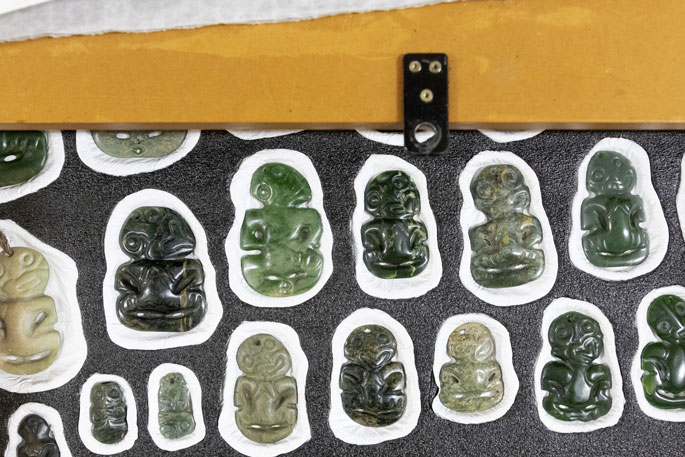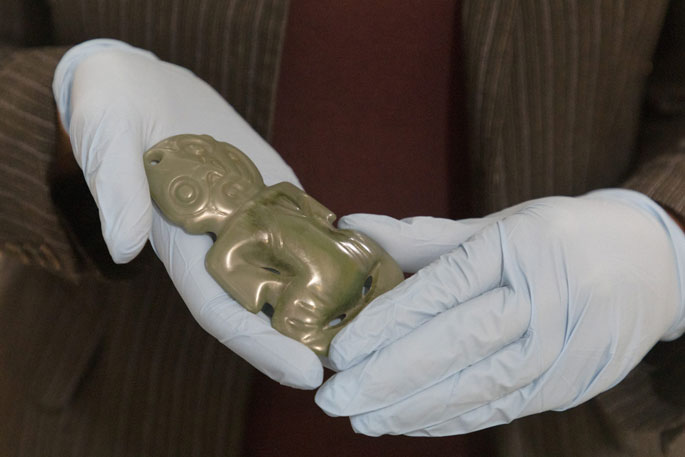Manaaki Pene's name could not be more apt for the important role she plays at Rotorua Museum.
Pene - whose first name means ‘to take care of' - is the Rotorua Museum's mātauranga Māori curator, taking care of the museum's taonga Māori.
Pene has worked at the museum for more than 17 years.
'I'm part of the furniture.
'I love the stories. I love to be able to connect whānau with their taonga. It's quite humbling to be that person who is the kaitiaki - not only of the physical taonga but also the mātauranga associated with those taonga.”
She says being able to share those treasures and knowledge with the community is rewarding and feels like a service to the community.
'I love history, I've always loved it.”
But a path to the museum is not one Pene anticipated.
'I didn't think that I would end up in a place like this actually, because I never visited museums as a kid - not at all.”
She says when she learned to weave, a Māori textiles conservator visited as a guest speaker.
'She talked about her mahi, restoring Māori textiles, and I thought ‘wow, what a cool job, I want to do that'.
'It got me started on that whole pathway.”
 The Rotorua Museum's poupou (back) and tekoteko (fore). Photo / Andrew Warner.
The Rotorua Museum's poupou (back) and tekoteko (fore). Photo / Andrew Warner.
Pene did a postgraduate museum studies course and volunteered at the Rotorua Museum, then a part time role, then a permanent full-time role.
'I think it helps too, being from Rotorua, being Te Arawa, you already have that connection with the history, with the taonga, it's just more meaningful.”
Pene says at first it was 'a little bit scary” and while it's a job she loves, she takes it and her role seriously.
'Even though my intentions were genuine, to look after all these taonga, they still had a lot of mana, and a lot of mauri. My first couple of years in the taonga Māori space I was really unsettled. I was really quite nervous.”
Pene asked Rotorua Lakes Council's kaupapa Māori director Mauriora Kingi for a karakia.
'Just to let our tīpuna know that I came in peace.”
That helped but Pene says she's still conscious of showing utmost respect.
Pene says the museum owes the foundation of its taonga Māori collection to jeweller and 'avid collector” Frank Peat.
Peat's collection includes kauri gum, taonga Māori, bird specimens, New Zealand art and historical photography, says Pene.
Originally based in Titirangi, Auckland, Peat had his own museum called The Treasure House, which he relocated to Rotorua around 1936.
He purchased a two-year lease on the Nukuteapiapi wharenui at Whakarewarewa, and established Rotorua's version of the Treasure House there.
'By about 1939 he was looking to retire so he offered to sell his collection to the Rotorua Borough Council.
'The timing was perfect because they were in the middle of building what is now the Sir Howard Morrison Centre, but then called the Rotorua Municipal Buildings. They were building that to be a library, a museum, a research centre.
'It was the onset of World War II, so the council couldn't justify the spend - they just didn't have the money [to purchase the collection].”
 A bible rendered from Kauri gum in the Rotorua Museum collection. Photo / Andrew Warner.
A bible rendered from Kauri gum in the Rotorua Museum collection. Photo / Andrew Warner.
The council arranged a lease on the collection, aimed at completing it as a purchase after the war. That happened 'around 1952″, says Pene.
The collection was on display at the municipal buildings for about 'two or three years” because the council then refit the space so it could grow the library, and the Peat collection went into storage.
The council then bought the Rotorua bathhouse building in Government Gardens and it opened as a museum in November 1969.
It closed again in 2016, and had remained so, and the Peat collection was again in storage in a secret location in Rotorua.
 The museum's hei tiki collection, including some from the Peat collection. Photo / Andrew Warner.
The museum's hei tiki collection, including some from the Peat collection. Photo / Andrew Warner.
Pene says the provenance of a lot of Peat's collection is unclear.
Peat's collection includes a collection of poupou and tekoteko, and Pene has worked with local carvers to fill in the blanks and provide insight into the carvings.
Among the Peat collection was also hei tiki, one of which was Pene's favourite - carved in īnanga - clouded grey-green pounamu.
'The museum definitely owes its foundation collection to Mr. Peat.”
-Local Democracy Reporting is public interest journalism funded by NZ On Air.




0 comments
Leave a Comment
You must be logged in to make a comment.